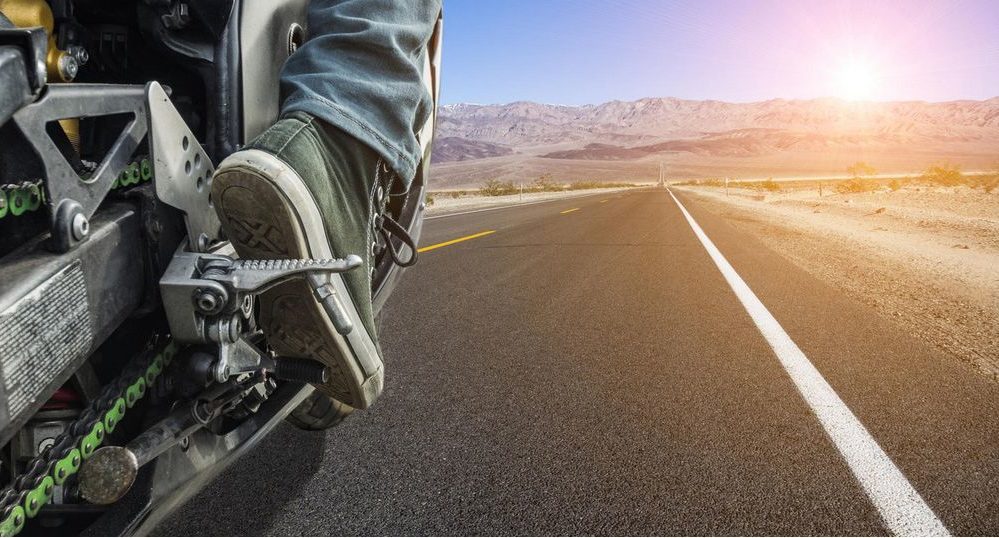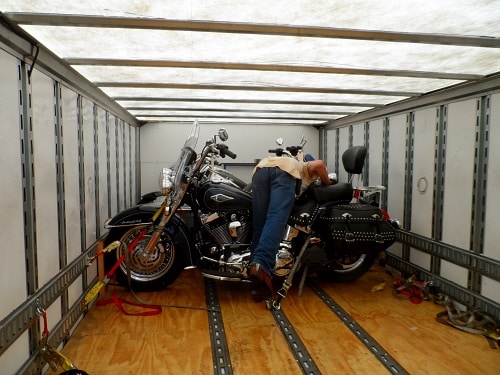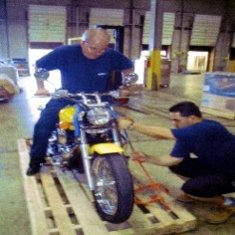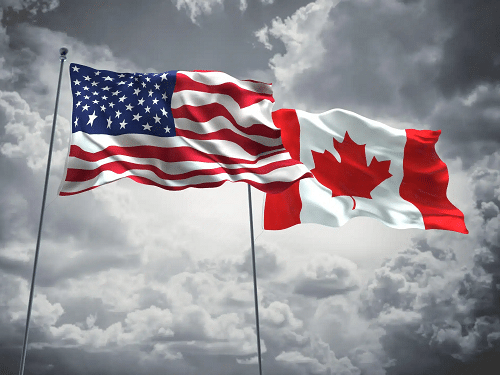Motorcycle Shipping
Cost Calculator
Need motorcycle shipping services? Pick up/drop off your motorcycle at one of our 47 terminals (palletized shipping). If your bike is far from a terminal, we’ll ship to/from your front door (non-palletized shipping). Use our calculator for motorcycle shipping costs.
America’s #1 Motorcycle Shipping Company
1-888-347-1391
America’s #1
Motorcycle Shipping Company
Our 47 Motorcycle Shipping Terminals
Want to drop off your motorcycle today at one of our locations? Just place your order and we’ll handle the rest. Daily shipments are available during business hours. This is for palletized shipping only.
| Albuquerque-Columbus | Dallas-Jacksonville | Kansas City-Minneapolis | Nashville-Portland | Raleigh-Tampa |
|---|---|---|---|---|
| Albuquerque, NM 1600 1st NW Albuquerque, NM 87102 | Dallas, TX 2242 Manana Drive Dallas, TX 75220 | Kansas City, MO 5001 W Geospace Dr. Independence, MO 64056 | Nashville, TN 5014 Harding Place Nashville, TN 37211 | Raleigh, NC 530 Hinton Oaks Blvd Ste 400 Knightdale, NC 27545 |
| Anchorage, AK 209 Post Road Anchorage, AK 99501 | Denver, CO 22700 East 176 Frontage Road, Suite 100 Brighton, CO 80603 | Las Vegas, NV 1780 S Mojave Rd Las Vegas, NV 89104 | New York City, NY 6 Fitzgerald Avenue Monroe Township, NJ 08831-3729 | Richmond, VA 4271 Carolina Ave. Richmond, VA 23222 |
| Atlanta, GA 1485 Westlake Parkway Atlanta, GA 30336 | Detroit, MI 26765 Fullerton Redford, MI 48239 | Laurel, MD 13200 Mid Atlantic Blvd Brick Yard Business Park Laurel, MD 20707 | Omaha, NE 4510 F Street Omaha, NE 68117 | Sacramento, CA 3065 Ramco St., Suite 175 West Sacramento, CA 95691 |
| Billings, MT 7232 Grand Avenue Billings, MT 59106 | Eugene, OR 3330 Roosevelt Boulevard Eugene, OR 97402 | Los Angeles, CA 3320 E. Miraloma Ave. Anaheim, CA 92806 | Orlando, FL 6310 Hoffner Ave. Orlando, FL 32822 | Salt Lake City, UT 2571 West 2590 S. Salt Lake City, UT 84119 |
| Boise, ID 3340 S. Denver Way Boise, ID 83705 | Grand Rapids, MI 600 E Riley Street Zeeland, MI 49464 | Lowell, MA 263 Industrial Avenue Lowell, MA 01852 | Pasco, WA 2405 E Ainsworth St Pasco, WA 99301 | San Diego 12302 Kerran St Ste 200 Poway, CA 92064 |
| Bolingbrook, IL 900 Windham Parkway, Suite A Bolingbrook, IL 60490 | Hartford, CT 250 Commerce Circle New Britain, CT 06051 | Medford, OR 2061 Lars Ways Medford, OR 97501 | Philadelphia, PA 425 Schoolhouse Road Telford, PA 18969 | San Jose, CA 887 Wrigley Way Milpitas, CA 95035 |
| Charlotte, NC 10240 Western Ridge Rd, Ste. A Charlotte, NC 28273 | Houston, TX 9619 Kirkton Houston, TX 77095 | Midland, TX 3411 W Industrial Ave Midland, TX 79703 | Phoenix, AZ 3815 West Washington Street Phoenix, AZ | Seattle, WA 1519 St. Paul Avenue Tacoma, WA 98421 |
| Columbia, SC 120 Queen Parkway W. Columbia, SC 29169 | Iowa City, IA 2820 S. Riverside Drive Iowa City, IA 52246 | Milwaukee, WI N8 W22270 Johnson Drive Waukesha, WI 53186 | Pittsburgh, PA 121 Tri County Drive, Building 5 Freedom, PA 15042 | St. Louis, MO 4045 Lakefront Ct. Earth City, MO 63045 |
| Columbus, OH 2020 Williams Road Columbus, OH 43207 | Jacksonville, FL 550 Gun Club Road Jacksonville, FL 32218 | Minneapolis, MN 2480 Long Lake Road Roseville, MN 55113 | Pompano Beach, FL 3039 North Andrews Avenue Ext. Pompano Beach, FL 33064 | Syracuse, NY 6412 Deere Road Suite 3 Syracuse, NY 13206 |
| Portland, OR 19470 Southwest 118th Avenue Tualatin, OR 97062 | Tampa, FL 5105 W. Knox St. Tampa, FL 33634 |
Pro Tip
Many motorcyclists end their road trip at one of our 47 shipping terminals, catch an UBER to the airport, then fly back home the same day. We handle the shipments of their motorcycles back to their houses. By doing a 1-way road trip, riders can travel further, save time by not riding back home, not pay for hotel, food, gas, etc. Use our instant motorcycle shipping cost calculator to find out costs.
Main States For Motorcycle Shipping Service
While we ship to all states, even to Alaska and Hawaii, 60% of our business comes from these 4 states. If you are shipping to/from one of these states, check for our motorcycle transport terminals.
California
We ship to all cities in California, but the main cities are:
- Los Angeles*
- San Jose*
- San Diego*
- Sacramento*
- Orange County*
- San Francisco
- Riverside
- San Gabriel
Florida
We have 4 terminals in Florida, but we can ship to your front door too.
- Jacksonville*
- Tampa*
- Pompano Beach*
- Orlando*
- Miami
- Fort Lauderdale
- St. Petersburg
- Tallahassee
Texas
If you’re looking to ship a motorcycle to Texas, here are the most popular cities:
- Dallas*
- Houston*
- Midland*
- Austin
- San Antonio
- El Paso
New York
We have 2 terminals in New York. It’s a popular destination for people who are road-tripping or who purchased a motorcycle.
- New York City*
- Syracuse*
- Brookhaven
* Indicates that we have a terminal in that city where you can pick up or drop off your motorcycle. Don’t forget, you can also use our door-to-door service.

Dion Saks
He has been with the company since its inception and runs the operations of the business.

Debbie T.
Customer Support/Service Representative. She has been at AA Motorcycle Shipping for 20 years!

Selwyn S.
Customer Support/Customer Service Representative.
20 years of experience at this company.

Julia H.
Accounting/Customer Service Representative.
Over 20 years of experience at this company.

Dave T.
AES Representative / Customer Service Representative.
20 years of experience at the company.
Our Latest Google Reviews
How Much Does it Cost to Ship a Motorcycle? Sample Shipping Rates
| To / From | Distance | Cost | Estimated Transit Time |
|---|---|---|---|
| Los Angeles, CA to San Antonio, TX | 1350 miles | $625 | 1 week |
| New York, NY to Los Angeles, CA | 2800 miles | $845 | 2 weeks |
| Chicago, IL to Miami, FL | 1380 miles | $734 | 1 week |
| Houston, TX to Newark, NJ | 1600 miles | $735 | 1 week |
| Phoenix, AZ to San Francisco, CA | 750 miles | $734 | 5 days |
| Miami, FL to Seattle, WA | 3300 miles | $800 | 2 weeks |
| Denver, CO to Norfolk, VA | 1760 miles | $735 | 1 week |
| San Jose, CA to Boston, MA | 3135 miles | $845 | 2 weeks |
| Dallas, TX to Chicago, IL | 970 miles | $595 | 1 week |
| San Diego, CA to Las Vegas, NV | 335 miles | $495 | 2-3 days |
Top 3 Reasons People Ship Motorcycles
#1 Online Purchases
Motorcycle Auctions & Dealerships
Online purchases are the #1 reason people use our motorcycle transport service. If you’re still in the research phase on purchasing a motorcycle, read our article “Deals on Motorcycles: Your Motorcycle Buying Guide“. It talks about finding motivated sellers.
Dealerships also fall into this group.
#2 Relocations
US Military
This normally happens when a Change of Command occurs; also known as PCS (Permanent Change of Station). Normally only one vehicle, usually the spouse’s car, is paid by the military. It’s more expensive to ship a car than a motorcycle so all active military personnel choose to ship their motorcycle because the cost is out of their own pocket.
Work Related
Some people embark on new chapters in their lives and choose to move because of their job.
#3 Vacation/Road Trips
Snowbirds
A lot of snowbirds from Canada go on cross-country road trips before the cold hits.
Military Veterans
Also, military veterans who own Harley Davidsons do a lot of group rides to support a cause. Don’t forget, we offer a military discount upon request!
3 Motorcycle Shipping Services
Door-to-Door Transport
This is by far the most popular service. We can pick up and drop off a motorcycle anywhere in the US, no matter how rural the location is. This service is normally more expensive than using terminals.
Terminal-to-Door/Door-to-Terminal
This is normally used by people who live in a city where we have a location. This service is great for road trips. If you are going on a road trip, end your trip in one of our 40+ locations. Drop off your motorcycle M-F during business hours, then catch a flight back home. We’ll handle your shipment. No need to pay for lodging, food, gas, wear and tear, etc.
Terminal-to-Terminal
This service is normally used when there is a group of motorcyclists who are planning out a trip, like a group ride.
The Only Thing We Do Is Motorcycle Shipping
We are a full-service professional motorcycle shipping company. We ship motorcycles state-to-state and across the country (USA). While there are many companies on the internet, we are the only ones confident enough to give you an instant quote. The price you see is what you get. We don’t “upsell” or do “add-ons” like the competitors.
Nobody can beat our instant motorcycle shipping calculator. All you need to do is enter the pickup and drop-off zip codes, year, make, and model.
BEWARE! Other motorcycle shipping companies will take your information and sell it to many shippers. They are known as lead generation companies. AA Motorcycle Shipping is licensed and bonded. Verify here enter US DOT# 2244295

If you need your motorcycle to arrive by a specific date, CALL US, do NOT fill out the quote form. 1-858-578-3336 or Toll-Free 1-888-347-1391. Obtain pricing for a specific shipment. Great for motorcycle events, vacations, etc.

Shipping Motorcycle Cost Factors
There are several factors that affect the cost of motorcycle shipping: distance, size, and weight of the bike, additional services such as storage, insurance coverage, and transit times. Generally, the further away you are shipping your bike and the bigger or heavier it is, the more expensive it will be to ship.
Benefits of Using AA Motorcycle Shipping
- Reliable and specialized motorcycle shippers since 1983
- Competitive rates for door-to-door motorcycle transport
- We only use trucks with liftgates. We do NOT use ramps to roll your motorcycle
- $7,000 insurance included
- We give instant quotes unlike other companies
- Instant online tracking of your shipment
- Our truckers also rife motorcycles so you’ll never get an inexperienced person handling your motorcycle if it’s going on a truck
Safety and Security for Motorcycle Shipping
When transporting a motorcycle, safety, and security will always be paramount. Our trucker will ensure the vehicle is secure in an enclosed truck. You should also make sure that your bike has been properly serviced and inspected before it is sent off for transportation. For added peace of mind, you might consider investing a few dollars more in insurance coverage so that you are financially protected if anything were to go wrong during the shipment process.
Non-Palletized Motorcycle Shipping

The motorcycle is strapped to strategically placed eye bolts on the floor of the truck. These shipments may take a little longer to load, but the in-transit times are shorter since the trucking routes are direct. No online tracking is provided. This service is only available on selective routes.
Daily same-day drop-off shipping is only available at one of our terminals. You must place an order first to get your booking number.
Palletized Motorcycle Shipping

This is the premium service, where your motorcycle is secured to a pallet and shipped in an enclosed air ride trailer. Generally shipping times range between 7-14 days. This service comes with online tracking.
This is what Palletized Motorcycle Shipping looks like:








How To Ship Your Motorcycle

You’ll first need to choose a motorcycle transporter that fits your unique needs. Once you’ve done your homework on that, you’ll have to schedule the pick-up and drop-off details to get a quote. Once you get a price you like, book the shipment and pay. Keep in touch with your provider until the day of service to ensure you have all details covered and you’re entirely prepared for the process. Professional motorcycle shippers can take the stress out of shipping a bike because they have the experience and specialized equipment to get the job done right.
How Much Moto Transport Costs

Starting rates are around $400 for a short distance, like from Los Angeles to Phoenix.
If you live in a rural part of the US, our truckers can drive out to your neck of the woods without a problem. Just understand that diesel gas costs come into play.
If you are shipping to/from a large city, it’s easy access for our truckers.
Shipping to/from Canada and USA

If you need to ship a motorcycle to Canada from USA, or from USA to Canada, we can provide door-to-door transport service.
Contact us via live chat or read our US CANADA Motorcycle Shipping article for more information.
Includes US and Canadian Customs clearance.
What to Consider When Choosing a Motorcycle Transport Company

In your search, choose a company that has:
- A reliable and proven reputation for motorcycle shipping. Good reviews.
- Been specialized motorcycle shippers for many years (we’ve been in business since 1983)
- Competitive rates for door-to-door motorcycle transport
- State-of-the-art loading equipment and trucks
- Adequate motorcycle shipping insurance (FYI, AA Motorcycle Shipping covers each motorcycle with $7,000 in insurance, with additional insurance available)
- Instant quotes
- Instant online tracking of your shipment
Motorcycle Shipping Tips

Before shipping your motorcycle, it’s important to be prepared for what will happen. There are a few things you need to take care of before that happens. Here are some tips to keep in mind.
- Research motorcycle shipping companies, getting at least three estimates from three different companies.
- Wash your bike and give it a thorough once-over to take note of any existing damage before you ship it.
- Take out all personal items and deactivate any alarms that may be on them.
- The gas tank should only have no more than 1/4 tank of gas.
Prior to the departure of your motorcycle carrier, it’s important to do a once-over inspection. Take photos of the state of your bike and inspect for any marks or dents that are already there. Then, you can better compare the condition later, and if there is a dispute, you can show the photos to the insurance company. It’s very rare that a bike is damaged during transport, but it’s better to be safe than sorry. The driver will also take the time to look over your motorcycle for pre-existing damage. He will take his own pictures and make note of any findings within his report.
It’s all about FREEDOM!
Want to Travel More on Your Motorcycle?
Most of our customers are in their mid-30s to mid-50s. Many of them are simply enjoying their lives and traveling in groups or even riding solo. If you fantasize about road-tripping, watch and learn from Sterling Noren’s YouTube Motorcycle Travel Channel. He mainly has videos about motorcycle travel in USA.

Forms of Payment
Our Latest Blog Posts

Tips for Road Trips on Motorcycle (Must Read)
Embarking on a road trip on a motorcycle is an exhilarating experience, […]

Deals on Motorcycles: Your Motorcycle Buying Guide
Are you in the market for a new or used motorcycle, but […]

Salt Lake City, UT: Desert Rides and Motorcycle Shipping
AA Motorcycle Shipping Company welcomes you to the heart of the desert, […]

